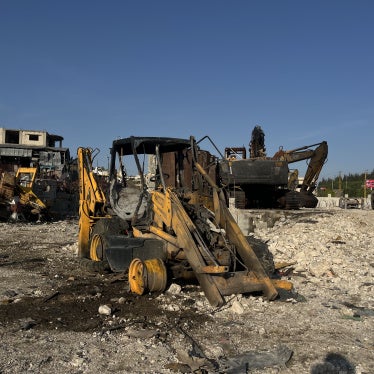By Jo Becker, advocacy director, Children's Rights Division
As 170 world leaders gather today to assess progress on global goals solemnly set five years ago, they will not get a passing grade on education for millions of the world’s children.
Among the eight Millennium Development Goals, one of the most critical for children—and their countries alike—is ensuring that within 10 years every child attends and completes primary school. Reaching this goal would break cycles of poverty by enabling children to gain skills and knowledge for better jobs as adults. It would expand educational opportunities for millions of children who have never attended school or have dropped out.
But progress has been far too slow. Worldwide, an estimated 100 million children are not attending school. Nearly half of the world’s countries will fail to meet the target of 2015 unless world leaders take immediate action. This means they must address factors like child labor, HIV/AIDS, discrimination and economic barriers like school fees.
A teenager in Indonesia, Hasana was 12 when she dropped out of school. Afterwards, she joined the 700,000 other Indonesian child domestic workers who endure 14- to 18-hour workdays, wage exploitation, and often physical and sexual abuse as well.
“My parents took me out of school because we had no money to pay for school fees,” she told Human Rights Watch. “I studied very hard and had good grades. I remember crying a lot.”
Unfortunately, Hasana’s case is not unique. For many children, particularly for those from poor families, school fees and the related costs put education beyond their reach. In El Salvador, annual school costs for one child are nearly four times a farmworker’s minimum monthly wage. Unable to afford an education, many children end up in the worst forms of child labor: sex work in Papua New Guinea, hazardous labor on banana plantations in Ecuador or child soldiering in Burma.
For other children, obstacles such as discrimination and violence in their schools force them out of the classroom. The global HIV/AIDS pandemic has also had a devastating impact on children’s right to education, particularly for the 14 million children worldwide who have lost parents to AIDS. Many children, particularly girls, are pulled out of school to care for sick family members or supplement their family’s income.
Children affected by HIV/AIDS may be denied access to school or mistreated by teachers. An Indian girl who was HIV-positive and had lost both parents to AIDS told Human Rights Watch about her treatment at school: “I sat separately from the other children, in the last mat. I sat alone. The other children wanted to be with me, but the teacher would tell them not to play with me.” Not surprisingly, the girl stopped going to school at age 10.
As the first target for the Millennium Development Goals, world leaders in 2000 pledged to close a gender gap in education by 2005, ensuring that equal numbers of girls and boys would be in school. But today, girls still account for 60 percent of the world’s children who do not attend school. Traditional biases against educating girls often influence parents to give priority to their sons’ schooling, especially when faced with school fees or poverty. Girls are also particularly vulnerable to sexual violence by classmates and teachers.
In South Africa, which has one of the highest rates of sexual violence in the world, a medical study found that among rape victims who knew their attacker, 38 percent said that they had been raped by a schoolteacher or their principal. Many girls leave school altogether because they feel unsafe there.
To address the gender gap in education, governments must educate families and communities about the benefits of girls’ education. They must also improve security in and around schools, address sexual violence in schools and provide incentives for girls to attend school. In India, girls living in villages where schools offer a free meal are 30 percent more likely to complete their primary education.
More broadly, governments should consider other proven strategies to keep kids in school, including making family stipends conditional on school attendance and providing books and uniforms. And leaders from rich countries should fulfill their existing pledges to provide long-term support to achieve universal primary education.
The benefits of education could not be clearer—not only for children and their families, but for countries as a whole. Education empowers children to be full participants in society, enabling them to exercise their rights and engage in civil and political life. And children who are in school are less likely to come into conflict with the law or fall prey to forms of exploitation like child labor, trafficking or child soldiering.
Education is not only a fundamental human right, but is also essential to global development. After leaders return to their countries after the U.N. summit, ensuring that every child attends school is homework they can’t afford to ignore.





